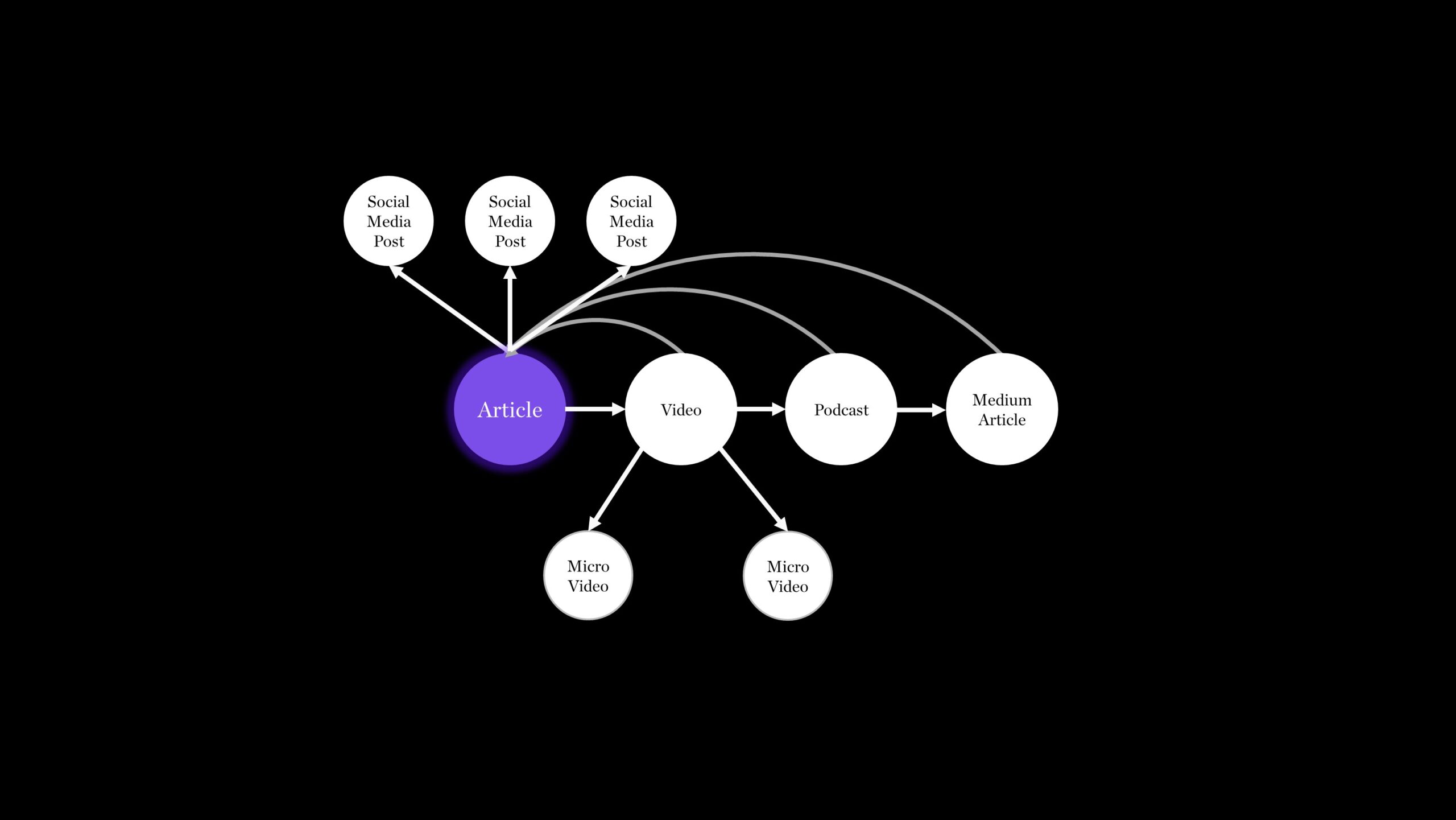Article last updated on April 18, 2022
Content atomization is the process of breaking down content into smaller pieces, so you have a better chance of getting your message across and engaging with your audience.
Atomizing content can help you increase engagement on social media, but it’s not always easy to do, so I want to give you an ultimate guide that will teach you how to atomize content for maximum impact.
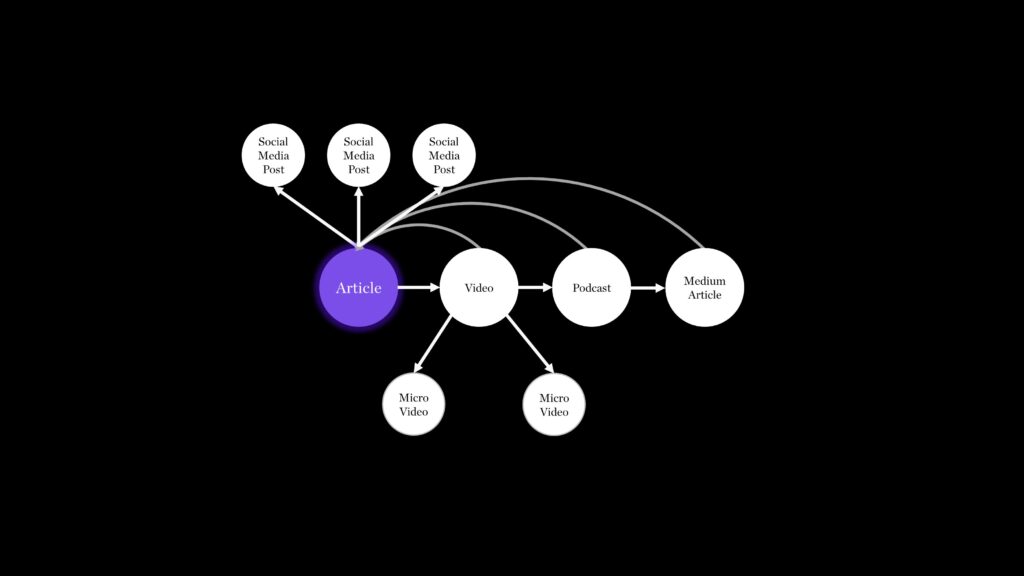
Working with online businesses and seeing their existing marketing strategies, I consistently see a lack of focus on long-term growth.
Very often, businesses rely on one source of traffic, and unfortunately, in most cases, it is paid traffic. This is a short-term approach. No brand building and no compounding long-term growth.
Atomizing the content can help with that, so your business has multiple sources of traffic coming from organic search, social media, email marketing, etc.
Why Should You Atomize Content?
You can squeeze more out of your efforts by remixing and refreshing your existing content before thinking about creating another piece.
You have already put the effort into producing quality content, so why should you spend time creating new content when there are other ways to get people to engage with what you have already created?
By using this method, you can create a variety of different types of content, which means you can keep your audience interested and engaged.
If you have a business that offers something valuable to its customers, then you should not have any hesitation in engaging and reaching out to more people.
There are three main reasons why you should do content atomization.
1. Content atomization makes you efficient
When you break down content into smaller chunks, you can use them as micro-content or mini-posts.
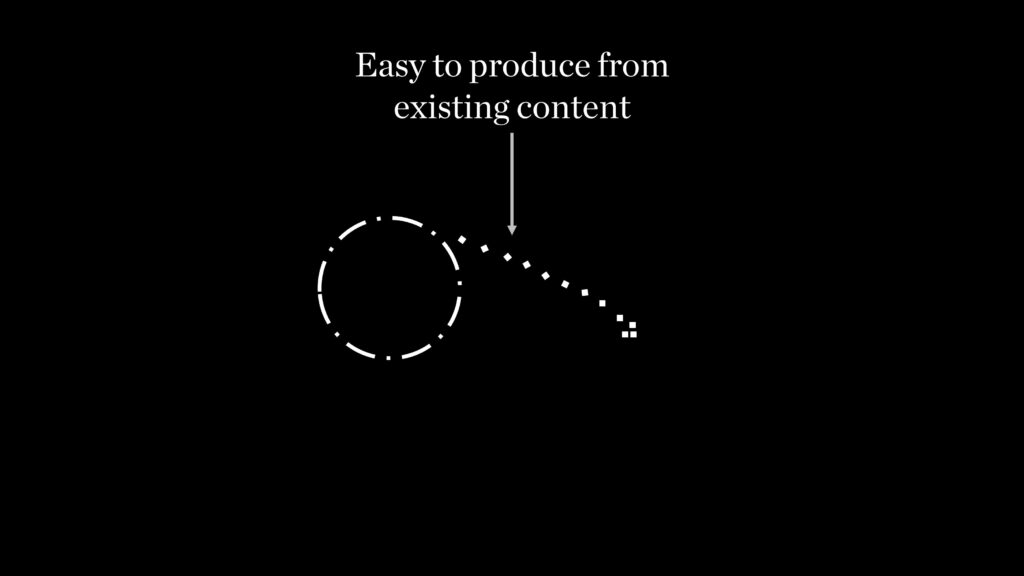
This allows you to share these small pieces of information over several days rather than having to wait weeks for a single post to be published.
This also gives you the opportunity to publish more frequently and make sure that your content gets seen by your target audience.
Efficiency comes from being able to reuse content over and over again, but in different format.
2. Content atomization helps you amplify your message
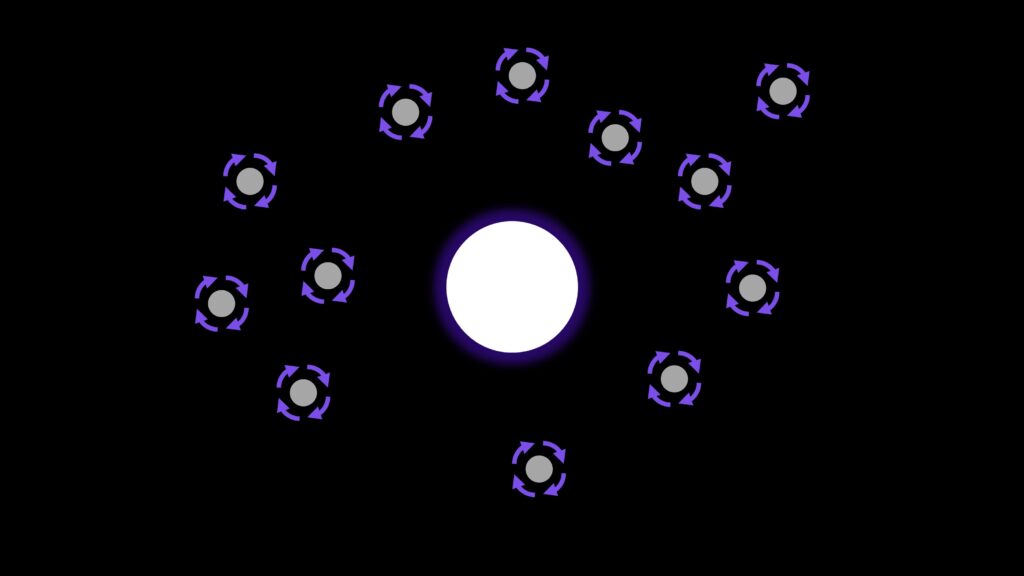
This gives you the ability to deliver your message in a way that is unique to each individual who reads your content.
For example, if you broke up one blog post into smaller pieces, you could write 10 different mini-articles about the same topic, all of which would be unique to each reader.
The end result is that you are reaching out to your audience in a much more targeted manner.
3. Content atomization helps you build trust
When you break down your content into smaller parts, it shows that you care enough about a very specific group of readers.

It lets them know that they are important to you and that you value their opinion.
Personalization helps you connect with your audience because you are showing them that you understand them and that you care about them.
Are content atomization and content repurposing the same thing?
No, they are separate things. Repurposing content means taking the same content and reposting it on other platforms. On the other hand, content atomization breaks down content into smaller pieces, creating new content out of original content and sharing those new, smaller pieces across various platforms.
Ways To Do Content Atomization
Content atomization strategy depends on the type of content that you are working with.
There are many different ways to do content atomization, but one thing must be the foundation, and that is having epic content from which to start.
The foundational piece of content
Your foundational content is the first piece of content that you produce.

It sets the tone for everything else that follows. Whether it is a blog post, a video, a podcast, or even a webinar, your foundational content needs to set the stage for everything else that you do.
How you approach your foundational content will depend on the type of content you are creating.
For instance, if you are writing a blog post, you need to think about the title, the introduction, and the body of the post before you begin writing.
If you are doing a video, you need to think through the script, the voiceover, and the graphics before you begin recording.
How to choose the right foundational content
It’s important to choose the best foundational content for your business based on what you can make and how your ideal customers read content.
If you write articles, but your ideal customer watches YouTube videos, there’s no point in writing an article unless you have a great video to go along with it.
If you don’t know what kind of content your ideal customer consumes, simply ask them.
Do not overcomplicate this step. Go and ask them.
Most popular foundational pieces of content for atomization are:
- Blog post
- YouTube video
- Podcast
- Webinar
Let me explain a bit what makes them unique.
Blog post
Writing a blog post is probably the most common form of content.
Personally, I think this is the best way to create an epic atomization strategy because it allows you to really go deep into the topic and have a lot of pieces to work with.
As long as you have a good idea of what you want to say, you can easily break it down into smaller pieces.
YouTube video
A YouTube video is another great option for atomization.
If you know exactly what to say in the video, you can easily produce it and then have it ready for atomization down the road.
Podcast
With podcasting, you can either record yourself talking about something that you are passionate about, or you can interview someone who has expertise in the same area.
Either way, you can easily break down the conversation into multiple sub-topics and use it later.
Webinars
Webinars are great if you offer information that is not so easy to find but still very valuable to your ideal customers.
This is why they are perfect for atomization. You can take a subject that people might not normally search for and combine it with something relevant and popular.
Micro pieces
Now I want to give you a list of all the micro content types you can use as atomized content.
- Guest blog post: Posting a part of foundational content on someone else’s site. This is useful when you are trying to build authority on a specific topic.
- LinkedIn blog post: A LinkedIn blog post is a great way to get more exposure from your existing network.
- LinkedIn and Facebook groups: LinkedIn and Facebook groups can be amazing place where you can share your knowledge and connect with others in your field. Do not have a mindset of salesman when you approach to these groups. Think about taking a part of your content of contextually share it inside of these groups.
- Reddit, Discord, forums and private discussion boards: These are some of my favorite places to share my knowledge and connect with other experts.
- Infographics: Infographics are one of the easiest ways to communicate complex ideas in a simple manner. They are a visual representation of data and they are also great for sharing your knowledge.
- Medium post: You can use a platform called Medium to repurpose your foundational content or break it down into two or more smaller pieces of content.
- Quora post: Quora is a website where users ask questions and other users answer them. It is a great place to share your knowledge and interact with other experts.
- Interview: Interviews are a great way to show off your expertise. If you are interviewing someone, make sure you ask them about their experience and the challenges they faced while doing the job.
- Email or email sequence: Email sequences are a great way to send out emails that are based around a certain theme. For example, you could create a series of emails that are related to a particular product or service.
- Facebook, Instagram, LinkedIn, Twitter, TikTok post: Social media are great places to share your knowledge and engage with your audience.
- YouTube video: YouTube videos are probably one of the most powerful tools you can use to reach out to your target market.
Now that you know all the micro content types you can use as atomized content, it can be very helpful for your value-packed content.
The reason why we want to start with atomized content to determine value-packed content is that we want to see how your customers respond. What they actually want.
It would be silly to create something that no one wants. So, if you are going to create something, you should first find out what your customer really wants.
Value-packed content
Value-packed content is your most valuable piece of content that your actual customers want. Think of it as your core content, packaged in such a way for your customers who want to learn from you.

If you don’t have any value-packed content yet, then you should start creating it now!
Here are the most common types:
- eBook
- Case study
- Webinar
So let’s go through some examples.
Let’s say you have atomized content that talks about “Common struggles that entrepreneurs face” and you get a ton of engagement.
If this is something that relates to your core offer and you have expertise in, then you can package it up as:
- eBook: “7 biggest struggles entrepreneurs face, but no one is talking about them.”
- Case study: “How these entrepreneurs solved the 7 biggest struggles (that no one is talking about) under 30 days.”
- Webinar: “Step-by-step process to eliminate the 7 biggest struggles (that no one is talking about) in under 30 days.”
You can see, there are many different ways you can package your content. But, remember, you need to create value-packed content. Not just any content.
Your value-packed content needs to be unique and relevant to your audience.
Once you have created your value-packed content, you can start sharing it everywhere.
You should be proud of your work because it shows that you care about your audience.
You should also think about where you can spread your value-packed content to get the most out of it.
For example, you can publish your value-packed content on Facebook, Instagram, LinkedIn, etc.
But, before you decide which platform to use, make sure you understand who your core customer is. There is literally no point in posting your value-packed content if it doesn’t relate to your target audience.
Remember, you need to be specific when you talk about your audience.
Now that you know the entire concept of content atomization and why it matters, it is time to understand how to actually do it.
How To Do Content Atomization
When it comes to content atomization, there are two main methods that you can use to break down your content into smaller chunks:
1. Using tools
2. Manually recreating new content
I am a big proponent of using tools to automate this process. Manually recreating content takes too much time and energy.
Don’t get it twisted, we don’t want to be another repurposed “wanna be” influencer.
Every piece of content you want to atomize should go through the mental filter of “Would this be helpful to my customer?”
In a sec, I’ll talk about tools, but there are two main things you need to consider when doing content atomization:
- How to break down your content?
- How to present your content?
Both of these concerns are solved when you use tools you like and get in the habit of using them.
So let’s dive deeper into both of those topics.
Tools for Atomizing your content
There are many tools out there that can help you break down your content.
The first thing you need to ask yourself is what type of tool would be best suited for your business.
The reason being, each tool has its own set of features and capabilities. Some tools focus more on text, while others focus more on images. Some tools are free, while others require payment.
And yes, some tools even offer paid upgrades or additional services. So, it is very important that you choose the right tool for your business.
Here are some of the most popular tools that you can use to atomize your content:
- Rev, Otter, Temi or Happyscribe – transcription tools
- Grammarly – grammar check tool
- Canva – social media post creation tool
- Feedhive – social media scheduling tool
- Headliner – convert audio to video tool
Btw. none of the links are affiliated or anything like that. No hidden agenda here…
Atomize your audio or video content
You can use Rev, Otter, Temi or Happyscribe to transcribe your audio and/or video content. These tools are perfect for people who record videos as part of their marketing strategy.
They allow you to easily convert your recorded content into text format. This way, you can then share your content anywhere you want.
Out of all the 4 I have listed, the best one is Rev, but if you have content that is in a foreign language, i.e., non-English, Happyscribe would probably be an ideal fit for you.
What to do with transcribed content?
You can convert text into blog posts, Medium articles, a series of social media posts, eBooks, etc.
Let’s say, for example, you have a recorded video on YouTube. You can create a transcript from it and then turn it into a blog post.
This way, you can add your voice to the written content and provide valuable insights to your readers.
If you have a lot of content, you can also use this method to create a list of your top 10 tips. Combine them into one piece of content and you have a decent eBook.
What would be the complete process from transcription to atomized content?
You would take your audio or video file and upload it to the tool. Then you would transcribe the audio or video and have a text version of content.
Next thing would be to double check if there are some grammar mistakes. For that, you can use a tool called Grammarly. Fix all grammar mistakes (if there are any), go to your favorite word editing tool, and appropriately format the text so you have headings, subheadings, etc.
At this point, you have a fully prepared blog post, which you can post on your website, Medium, or whenever you want.
Because you have this written content, you can create social media posts.
You can use a tool called Canva to create amazing looking social media posts and schedule them ahead of time. For scheduling your social media posts, you can use a tool called Feedhive.
The final thing you can do is create an email campaign and create a couple of “teasers” (basically a preview of the entire post) of the amazing new content you have and share it with your email subscribers.
In the end, instead of having only one video, you’ll have:
- Video
- New blog post
- Medium post
- Multiple scheduled social media posts
- Multiple emails for your email subscribers
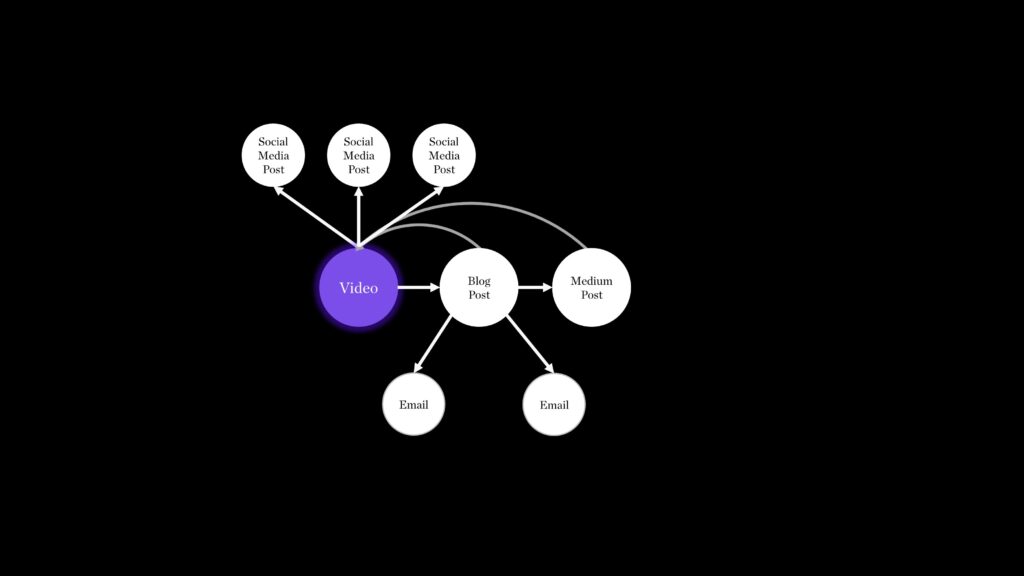
How to create video if I have only audio file?
There are many ways to achieve this. To save you the pain of sorting through 100 tools for this, my recommendation is to use Headliner.
You’ll be able to upload your audio, add your profile picture, and you’ll be on your way to having a video from your audio file.
Just go to their website and you’ll see what I mean.
Atomize your written content
If you have a large amount of written content, you may have the potential to break it up into multiple pieces and repurpose that content on other platforms.
But personally, the biggest leverage with written content is that you’ll have everything you need to create video or audio content.
You did all the hard work to write something and now you have a structure or outline to talk about it in different format.
For example, if you have a blog post that covers the top 7 tips about “something specific”, you can create 7 micro-videos, one long video, and convert that video into an audio file.
Those 7 micro videos would go to social media, one long video would go to YouTube, and an audio file would go to podcast platforms.
On top of all of that, you have the potential to use Canva, create additional social media posts and have a couple of email campaigns.
So to sum up, from one written content you could have:
- Blog post
- Article repurposed on Medium
- Multiple micro-videos
- One long video
- One podcast episode
- Multiple scheduled social media posts
- Multiple emails for your email subscribers
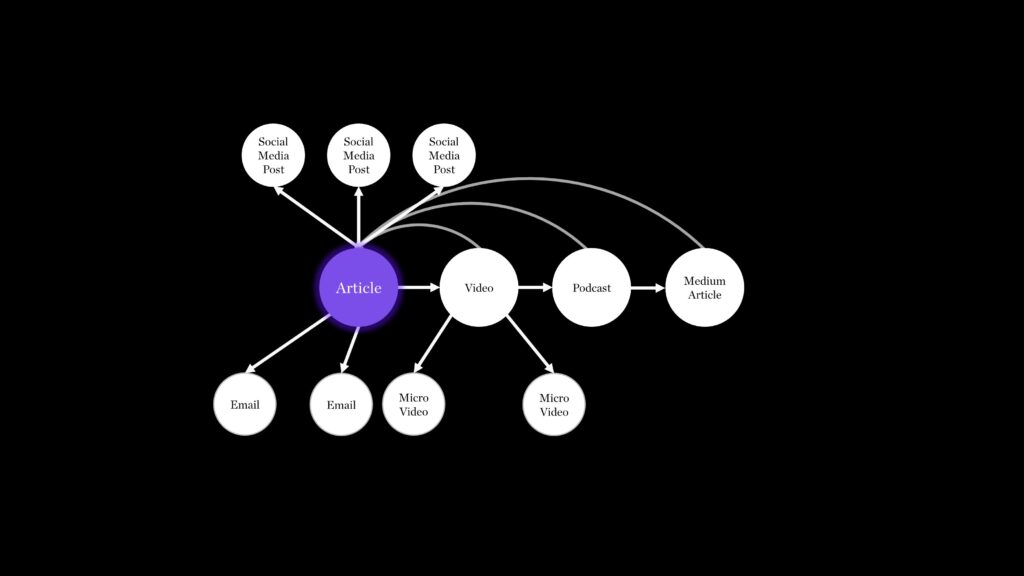
One thing I cannot stress enough is to never neglect your strength and what is easy for you to do.
That should be your seed, foundation, point of origin of content atomization, or whatever you want to call it…
If it’s easy for you to produce videos, awesome!
If it’s easier to write, great! Write more.
Only after you find out what is easy for you to do, can you start thinking about what else you can do with that same content.
When that is sorted out, every piece of content is put through the mental filter, “Would my customer like to see this?”
By understanding this entire process, you are creating a system that works for you and your business.
Part of my job is to divorce you from time-sucking activities so that you can focus on what matters most.
Conclusion
My goal was to show you how content atomization can be used as a tool to grow your business.
Content marketing is a very powerful tool, and when done correctly, it can bring in massive results.
You don’t have to spend all your marketing efforts on creating completely new content over and over again. I hope this content strategy guide helps you with your next content creation challenge.
Perhaps I’ll create an atomized piece out of this written content. It would be so meta.
Drop me a message if you have any questions, and I wish you all success.


